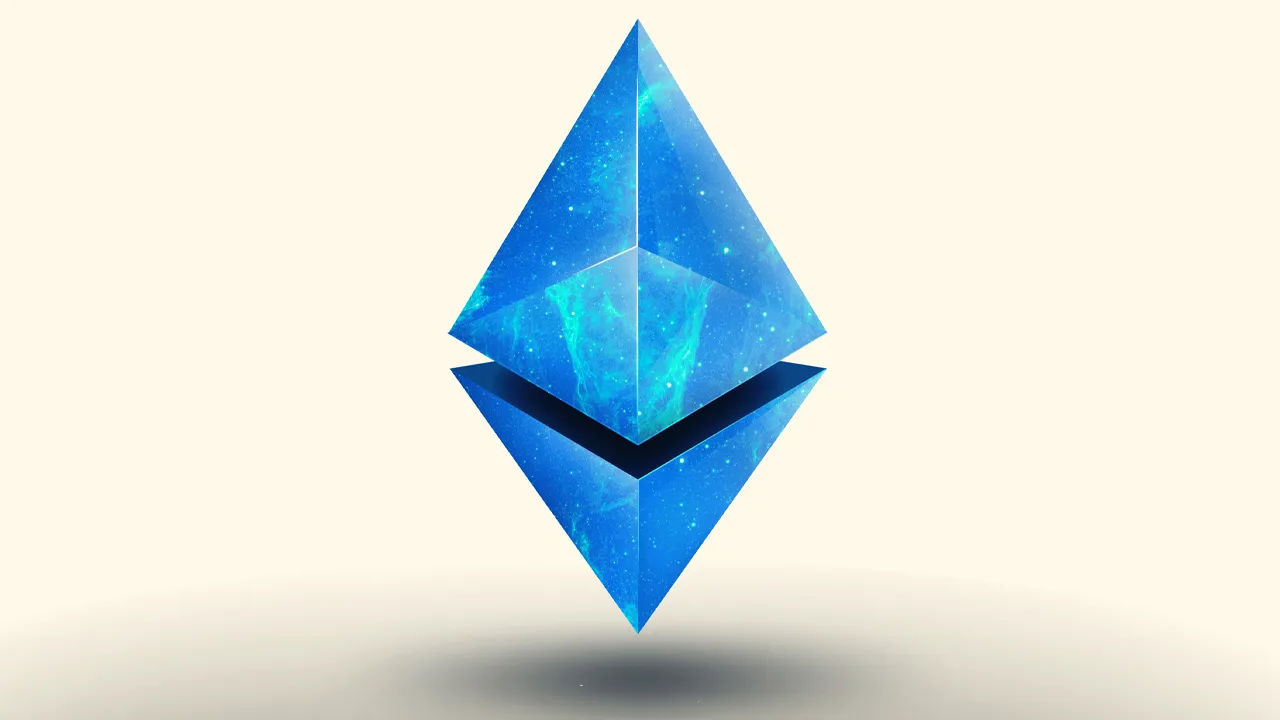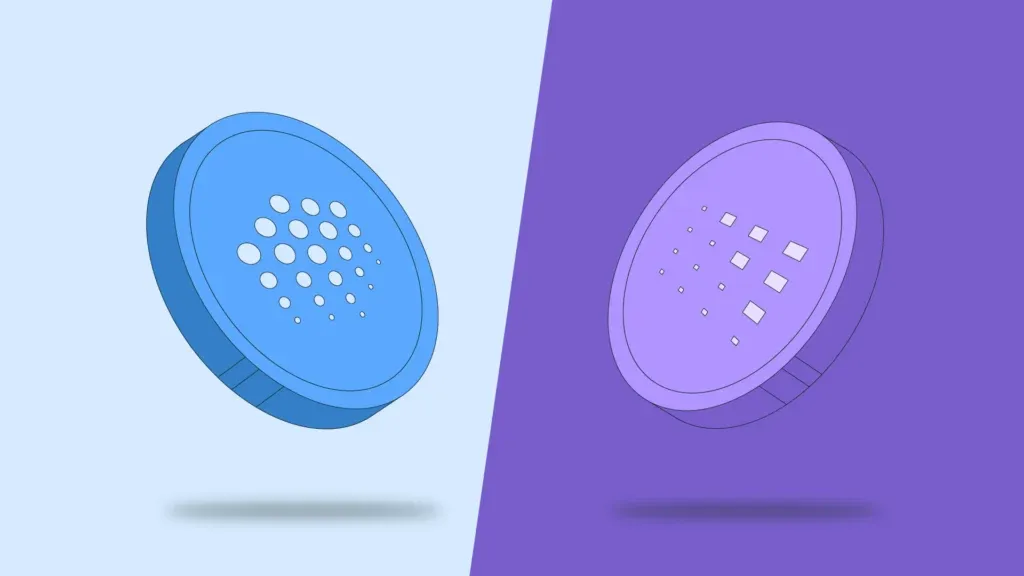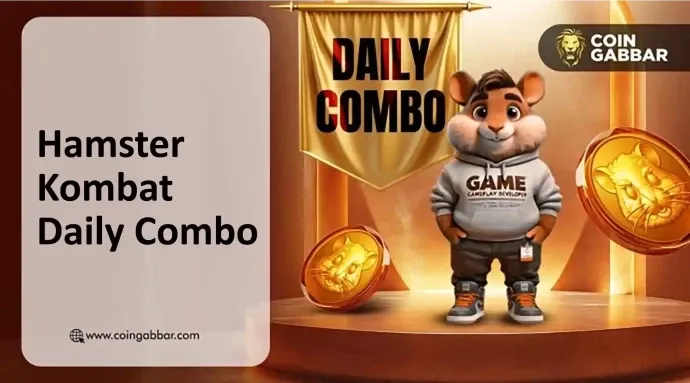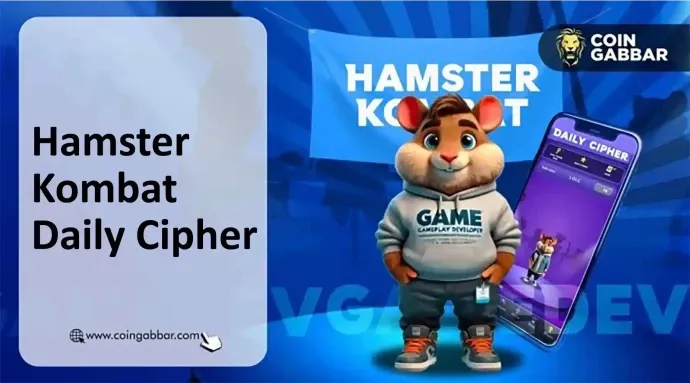In this hackathon, there are four award-winning projects related to AI. All the award-winning projects are trying to combine Web3 technology to solve industry pain points and meet real user needs.
Host: Yao, MCM Growth Lead of Solana Foundation
Guests: Sean, Founder of RateX; DY, Co-founder of HajimeAI; Dr. Darcy, Co-founder of Starpower; Edison, Co-founder of CUDIS; Tony, Founder of JogoJogo; Rene, Founder of CharacterX; Shannon, Co-founder of IntentAGI; Kevin, Co-founder of HackQuest.
Compiled by: aididiaojp.eth, Foresight News
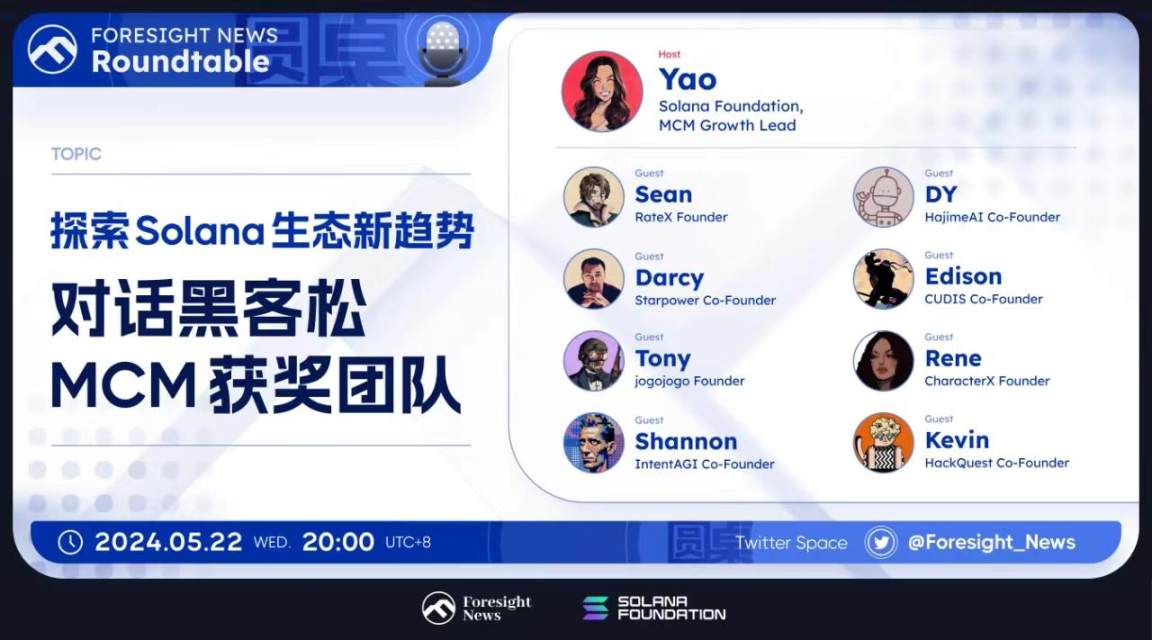
The recent Solana 2024 Renaissance hackathon in the MCM region has come to a close, and the list of winners has been announced. The first prize-winning project is RateX (a synthetic interest rate trading market based on collateral); the second prize-winning projects are CUDIS (providing ownership of health data and supporting wearable devices with artificial intelligence) and JogoJogo (an on-chain social entertainment platform); the third prize-winning projects are CharacterX (whose core product is the AI social economic tool XFriends), Hajime AI (a decentralized AI Hub designed for households), Starpower (a decentralized energy internet), and IntentAGI (autonomous intelligent agent operating layer).
On this occasion, we have specially invited the key members of the award-winning teams to share with everyone how they are exploring new trends in the Solana ecosystem.
Host Yao: Please introduce yourselves, guests
Sean: Hello everyone, I am the founder of RateX. Before founding RateX, I spent 10 years trading in the traditional capital markets, serving as head of fixed income investment and portfolio manager, managing portfolios of over a hundred billion. I have been involved in Crypto for about three to four years. In the last quarter of last year, I went all in on Crypto and established RateX.
Tony: Hello everyone, I am Tony, the founder of JogoJogo. Before founding JogoJogo, I have been working in game distribution and global payment. Our games generated $1.5 billion in revenue in Brazil, and global payments have an annual throughput of approximately $2 billion. I also participated in the early investment of FTT and have a natural affinity for Solana. I personally enjoy the process of building from 0 to 1, as we are all on a path of uncertain correctness, hoping to bring about small changes and improvements to the world.
Edison: Hello everyone, I am Edison. Before founding CUDIS, I have been involved in entrepreneurship. I entered the Crypto field in 2016, initially investing in Bitcoin and Ethereum, and then participated in the investment and incubation of many early projects. I also spent over two years in traditional VC. We are focused on building a project or brand in the physical world in the crypto field, and we also hope to provide better products to help solve some real-life problems.
Rene: Hello everyone, I am the founder of Character X. Before joining the tech industry, my dream was to be a literature professor, always concerned about human loneliness and social issues in the post-modern society. I discovered the strong entrepreneurial atmosphere at Stanford, and later joined the tech industry. When I was working on social projects at Tencent, I was involved in some Southeast Asian markets. I joined the Crypto industry through various coincidences. I entered the market during a bear market, so I tried many business directions during the process. After ChatGPT came out, the combination of AI and social interaction sparked my imagination about how humans can stay connected in a post-modern society, so I started Character X with some friends.
Shannon: Hello everyone, I am Shannon, co-founder of IntentAGI. I am a researcher in the AI industry, with over 6 years of research experience in mainland China and Silicon Valley. We are currently working on a new decentralized model for multimodal operable devices.
Dr. Darcy: Hello everyone, I am Darcy, co-founder of Starpower. After graduating with a doctorate in 2016, I have been working in the renewable energy industry. My doctoral specialty is in photovoltaics and renewable energy. Last year, another co-founder approached me about wanting to work on energy-related projects, and I thought the characteristics of new energy and blockchain distributed systems might be a perfect fit. Starpower aims to connect our distributed energy devices to build a decentralized energy internet.
DY: Hello everyone, I'm DY, a graduate of the University of Auckland. In 2017, I was involved in Bitcoin and Ethereum mining, and in 2019, I managed market value at Binance and OKX. At HajimeAI, I am mainly responsible for hardware and economic model design, as well as mining machine hosting. HajimeAI is a peer-to-peer edge computing basic network, providing plug-and-play AI models and personalized AI assistants for specific scenarios. We can perform real-time upgrades through containerized docker. Our main application scenarios are still focused on family companionship, personalized AI services, and voice processing.
Kevin: Hello everyone, I am Kevin, founder of HackQuest. We are currently working on a developer education platform and will also be involved in hackathon activities. Since 2021, we have been organizing hackathons with major internet companies and some Web3 public chains.
Host: Please introduce what your project is mainly doing, what practical problems it solves, and the team background
Sean: RateX is currently a collateral-based synthetic interest rate trading market, with basic functionality somewhat similar to Pendle V3. Based on our current basic functionality, we can also provide users with options to easily generate strategies and create custom synthetic interest-bearing assets.
We have developed the first leverage interest rate trading DeFi protocol on Solana, and we also hope to bring more choices to Solana's ecosystem users. During our fundraising process, many investors were concerned about our core differences from Pendle. Firstly, we are a leverage-based trading protocol, providing users with more efficient investment and trading options. Users can trade with 10%-20% of the funds compared to Pendle. As a collateral trading protocol, we can conduct long and short trades. Secondly, for some low absolute return assets, such as those with less than 20% minimum absolute returns, we can provide users with lower slippage. Thirdly, because we are a synthetic yield protocol, our yield comes from public market data. It includes not only native interest-bearing assets on Solana, but also interest-bearing assets on Bitcoin L2, as well as some real-world assets such as US TREASURY, CPI, and more.
Our team currently has close to 20 members, with over half of them being developers. We have three co-founders, and besides myself, our COO was a top trader in the interest rate derivatives market. Our team has rich experience in the interest rate derivatives field. Our CTO has nearly 20 years of experience in trading system development and has led the development of some well-known derivatives exchanges. He is also a security expert and has served as a chief security consultant at top derivatives exchanges.
Tony: JogoJogo is committed to being a viewpoint trading protocol and solving the following three core issues. First, to monetize and trade everyone's viewpoints. It is truly admirable to bet on one's own viewpoints, to be truly involved (skin in the game). Secondly, to solve the trust issue between the prize pool and players. We ensure automatic clearing and settlement of assets by building on-chain. Finally, to introduce an annualized yield rate (APY) with a real expected value (EV), driving LST and DeFi into the next stage. These are the three key directions we are committed to addressing.
Our team members have rich experience in game distribution and DeFi construction, as well as global landing and organizational capabilities. We will build different landing products based on the characteristics of each country, and we are currently planning to expand the team.
Edison: CUDIS products mainly consist of three parts. The first part is our Smart Ring. Currently, traditional Smart Rings lean more towards a sense of technology and fitness. We may focus more on fashion, such as the design and materials of our rings. The Smart Ring itself can help users record heart rate, blood oxygen, steps, calorie consumption, and sleep data, providing users with multidimensional data.
The second part is our application, which not only provides a data dashboard to display all data but also has a dedicated AI coach to provide daily advice based on the data. We model the AI coach with top coaching teams from the US and Asia. The application also allows for social activities, where users can manage their family's health and initiate community competitions through the app. We emphasize more on Wellness, which is divided into 8 different dimensions, including professional, physical, and mental health.
The third part is the website, which currently only accepts purchases with SOL. We have just released 1500 rings and will have a second release next week. After that, we will accept various assets within the Solana ecosystem as payment methods.
The two core issues we mainly want to address are, first, we hope to help users encrypt their data and store it on the chain, allowing users to access their data at any time and export it to other applications. The other point is that we have seen many entrepreneurs who cannot generate good income in this field because most Web2 applications are free. In the Web3 model, we hope to help more builders create better products through community and user data, allowing builders to earn substantial income while providing value to users.
Most of our team members are from UCLA and UCB. I graduated from UCLA, and my co-founder graduated from UCB. We have always been involved in Crypto-related activities. Our team members have strong backgrounds in Crypto and traditional consumer industries, with most of them coming from companies like Amazon, Microsoft, and Nike. We hope to provide users with more interesting products in the future to improve their quality of life.
Rene: In the early stages of CharacterX, we positioned ourselves as an AI social platform where you can create your own AI character and interact with AI characters created by others. We embedded a multimodal interactive experience very early on, including the ability to exchange private photos and personalized AI responses based on the information in the photos sent by the other party. Because our entire product design is very good, and there are no similar products in the market, we seized the opportunity and quickly attracted a large number of users. So far, our user registration has reached 4 million. We have been observing user behavior and collecting their feedback.
We found that decentralization is very important in the AI social era. We observed two major demands. First, users may use multiple platforms at the same time, but if a new game or a different AI platform appears, and I want to take my AI partner to the new platform, it is obviously not possible. It's also inconvenient to create a new partner on the new platform each time. Another scary situation is if the platform goes bankrupt, my AI partner also dies.
We found that users want to preserve memories for a long time and want to take their AI partners to different platforms. In addition, AI design itself has a certain threshold. Even if we provide better and simpler tools, there are always very few high-quality content creators, and everyone is contributing their data and eager to participate in the AI economy. This is why we hope to help everyone through a more democratic economic system.
Based on these two major user demands we observed, our product has entered the next stage, which is why we participated in the Solana hackathon. We are building a complete decentralized social identity system based on AI, allowing each AI to have its own identity system and independently manage its identity and memories.
In addition, we have also made some economic connections using underlying technology, both of which are real user needs we have observed. Currently, our team has added more senior Solana developers and AI experts to help us design more long-term AI models. Our early core team also includes some friends I brought from Tencent.
Dr. Darcy: Starpower mainly uses technologies such as the Internet of Things, blockchain, and AI to connect energy devices used in homes and businesses, such as air conditioners, water heaters, and electric vehicles, to form a schedulable energy device network. The network can improve energy utilization efficiency and respond to various application needs, such as demand response for our virtual power plant, thereby improving energy efficiency and data management on the energy side.
Climate change is generally recognized as one of the biggest challenges facing the world. Our energy is gradually shifting towards renewable energy, meaning the proportion of renewable energy is increasing. However, the biggest characteristic of renewable energy is its instability. For example, if a cloud suddenly drifts over a solar photovoltaic power generation system, the entire power generation may decrease by 10%. At this time, we need to connect the energy device network I mentioned earlier. When your power grid is 10% short of power generation, we can reduce demand by 10% on the demand side. For example, by raising the air conditioning temperature by one degree or lowering the water temperature of the water heater by one degree.
One very enthusiastic thing in the energy industry is the popularization of electric vehicles. The annual sales volume of electric vehicles is currently about 10 million, and it is expected that the ownership will reach the level of 1 billion in 10 years. Almost every household that buys an electric vehicle will install a charging pile. After installing the charging pile, they will basically install an energy storage battery, so the amount of distributable energy will increase. This is an incremental blue ocean market that we need to quickly capture. With the flywheel effect of Web3 tokens, Starpower can rapidly increase its user base. We want to become the Web3 Uber, connecting energy devices in every household, including power generation devices, energy storage devices, and power consumption devices, to participate in the intelligent scheduling of our power grid.
Most of our team members come from the traditional energy industry. Another co-founder is the assistant to the chairman of the HashKey Group. Our team currently has about 20 people, composed of teams from Wanxiang's IOT, Web3, and energy hardware supply chain.
DY: The core of HajimeAI is a peer-to-peer edge computing basic network, where users can use AI services in HajimeBot and contribute idle computing power to the network.
Our system is mainly divided into three parts: HajimeAI, HajimeBot, and HajimeGarden. HajimeBot actually presets a series of artificial intelligence models and has some basic configurations. The first generation series has 8GB of video memory because high video memory is required for edge-side inference and computation. HajimeGarden is similar to a crowdfunding platform for AI computing power.
HajimeAI is building a decentralized peer-to-peer network in an N to N manner. The AI deep learning architecture Transformer is highly dependent on computing power, continuously stacking neural networks and ingesting multidimensional data. The cloud computing model definitely cannot achieve low latency and privacy. For example, users are unwilling to put some private information, such as photos, sound, or some health-related data, on the cloud.
In addition, when using Transformer, OpenAI cannot avoid high latency and cannot even achieve long-term memory because its token quantity is limited. Therefore, we have created a decentralized scheduling center, HajimeAI, in an N to N manner. HajimeAI can schedule the computing power of power devices to verify if the computing power is working effectively and also provide customized models to offer standardized services.
Our entire team mainly comes from Yale and Goldman Sachs, with a Harvard Ph.D. responsible for data modeling. The R&D team has mostly been working for over 20 years, mainly from Baidu's advertising department, Huawei, and JD Smart Home.
Shannon: Nowadays, when we talk about AI writing poetry, painting, and chatting, it falls under AI content generation. But in reality, AI cannot actually help me do real work, which is what we hope AI can do for us. We hope AI can directly use my computer to complete my work, and this is actually a problem we are currently solving. We are training an AI assistant to understand the state of my computer like a human and then speculate on the next action to be executed.
Currently, the multimodal component of GPT4 has an accuracy rate of only 10.59%. Our team has improved it to an accuracy rate of 50%, making it the best AI assistant within the researcher community. Our model has entered a stage similar to GPT2, where we now have a model that everyone can use, but it is still quite inaccurate. So we have also proposed the concept of "AI Coach to Earn," inviting everyone to participate in the model's feedback learning. In this part, we will use tokens as incentives. Secondly, we have solved the problem of model benchmarking and are building a composable ecological foundation for everyone. We will launch our first version of the browser plugin at the end of this month, where users can interact with our product to issue commands, and our product will understand their intentions and directly operate their browser to help solve some problems.
Host: What are the points of integration between the product and Solana technology and ecosystem? What are the plans for subsequent product development, project operations, and financing?
Sean: We will launch a testnet version next month and conduct community testing at the beginning of next month to gather feedback on the trading functionality. In the second half of this year, we will launch synthetic yield stablecoins and bonds based on the core functionality of RateX. We completed our Pre-Seed financing last month and will start the second round of financing after the product goes live.
Tony: In June, we will launch a product themed around the European Cup on the Snoic testnet. All users can create their own prize pools, invite friends to share their match viewpoints, and enjoy special rewards from JogoJogo and Snoic. After the product testing is completed in June, we hope to receive feedback and suggestions from the community. At the same time, we plan to start the internal testing of a viewpoint trading DePIN device in July and open up internal testing spots, hoping for continuous community attention.
Edison: We will soon conduct the second phase of our sale, and we will also meet with everyone at an offline event in Singapore in September. Our current users are scattered around the world, and we hold events globally every month, such as in New York in March, Dubai in April, Austin in May, Malaysia in June, Brussels in July, and more. We want to provide users with more experiences with smart rings and continuously iterate new features, hoping to provide users with better experiences. We are preparing to develop or co-build some new products in the fourth quarter. We have basically completed our seed round of financing. We have been working in North America, and in the third quarter, we will collaborate with more APAC communities for promotion.
Rene: We are currently conducting the SDID Mint activity, primarily serving human users. By July, we will have an SDID Mint for AI, and we will be hosting many related activities from this month to next month. We completed the Seed round of financing earlier this year, and the next round of financing is expected to start next month.
DY: We will start the presale of verification nodes in June because our verification nodes mainly verify computing power nodes, and the client will have a voice data collection testnet, where we will test a customized model at the edge. In August, we will launch a prototype testnet of HajimeGarden, which can perform scheduling and verification functions. We have also signed a cooperation agreement with the champion project from last year's hackathon, allowing them to enter HajimeGarden and provide computing power. Our node sales last month amounted to about 1 million U, and this month we plan to raise funds in the European and American markets.
Shannon: We will release the first version of our product this month, and users can participate in "Train AI to Earn" by conversing with our model to submit learning data related to the model. After that, we will mainly focus on developing our entire action layer. We will invite more AI professionals to participate in our entire economic system. Our team is currently in North America, and we have some financing plans for the future.
Dr. Darcy: In April, we presold the first smart socket, and the presale quantity has exceeded 20,000 units, making it a relatively large Depin project. We are currently conducting the next marketing activity, giving away 300 engineering machines. Everyone can follow Starpower's official Twitter account to participate in the event and play with our engineering machines and prototypes. Our team is working hard and conducting simultaneous global sales. We are currently obtaining certifications in South Korea, the European Union, and the United States. After completing the certifications, our first batch of reserved users will be able to start receiving our devices.
Host: Did you receive any support during the hackathon? Many winning teams come from the founders bootcamp organized by HackQuest and Solana MCM. What did you gain from this bootcamp?
Adam: I will share some things we will do before and after the hackathon. The Solana ecosystem is relatively unfamiliar to the Chinese developer community, so we welcome everyone to reach out to us at any time with any questions about the Solana ecosystem or development. Before the hackathon starts, if anyone has good ideas or wants to learn more about the ecosystem, they can communicate with us, including participating in activities like HackQuest and offline meetups to meet more ecosystem partners. After the hackathon starts, if anyone has technical issues or needs more multidimensional support, HackQuest and others provide many ways to participate in the ecosystem. The Solana ecosystem is very unique because it has gone through many hardships and its growth has been very resilient. This resilience has become the culture of the Solana community, where everyone continuously supports each other, guides each other, and promotes each other's growth. We are very happy to see so many excellent projects coming out of the Chinese-speaking region, and I think the most important thing is how to collaborate with projects in the ecosystem.
Kevin: In the bootcamp event we organized with Solana MCM this year, we invited the founders of first-line projects in the Solana ecosystem to share, including the founders of Helius, Helium, and BackPack. I personally gained a lot from each sharing session, and I am also very happy to see so many winning teams emerging from this bootcamp and community. We are a developer education platform, and if there is a need to recruit developers, we can help with recruitment. In addition, we look forward to doing more online and offline activities with the Solana Foundation and other projects in the future.
Host: As a senior participant, can you give some advice to potential future participants?
Sean: The biggest advice is to truly innovate and do something cool that is genuinely helpful to the Solana ecosystem. I think that's the most important. Also, I hope everyone believes in the Solana ecosystem, as it is indeed different from other public chain ecosystems.
Edison: Participating in the Solana hackathon was a particularly memorable experience for us. Before and after the hackathon, we communicated and learned from the foundation and many Solana projects. We also hope to have closer communication and interaction with the ecosystem or foundation.
If you really want to create a product that users love, are willing to recommend to others, and are willing to pay for, you need to spend a lot of time getting closer to the users, showcasing the product to them, and communicating with them. In the Solana ecosystem, we have seen many successful projects go from early struggles to eventual success by doing these things. They did a lot of initially challenging things, such as organizing many events, meeting many people, discussing many collaborations, and spending a lot of time refining the product, ultimately laying the groundwork for the explosive growth they desired. Many projects in the Solana ecosystem, including the foundation, are very enthusiastic and friendly, and are willing to provide advice and help answer questions. So, I think it's most important to ask questions and communicate with everyone.
Tony: I think it's essential to stay true to your original intention and believe that Web3 can solve problems, such as peer-to-peer payments, transparency, and the value proposition of trust. Secondly, you need to be passionate because you will encounter many challenges in this process. During this process, actively communicate and continuously refine your business model.
Rene: From the perspective of an entrepreneurial team, I think it's most important to keep an open mind, especially for entrepreneurs with experience in the Web2 industry. In the process of communicating with many entrepreneurs, you will find that many are not very familiar with the entire Web3 play, and there may even be many doubts.
Participating in the hackathon allowed the Solana team to truly help us achieve some transformation and upgrades in what we are doing. For example, the decentralized solution for SDID actually involved a lot of communication with partners in the Solana ecosystem. This help could range from the entire technical architecture to some transactional regulations in the competition. The Solana ecosystem is very open, and here, it's not just about getting rewards; it's about truly bringing about deeper changes to the entire project.
DY: The reason we are doing HajimeAI is that we believe that the combination of edge computing and large models may be a mainstream direction in the future. So, when choosing a project, you must choose a mainstream direction for the next three to five years or even five to ten years. Secondly, everyone is currently exploring comprehensive wisdom. We need to combine blockchain to provide computing power for our edge computing devices while ensuring the effectiveness of returns and computing power.
Dr. Darcy: First of all, as a project team, you must have a deep understanding of the demand. Our project must solve a real problem and have genuine market demand. For example, in the field of new energy storage, everyone knows that it is a growing blue ocean, and the development of new energy on the mainland is very vigorous. The pain point for traditional manufacturers is how to quickly deploy hardware, so we need to think about how to use tokens to drive a flywheel effect and deploy hardware. Technology must serve applications, and finding the best combination of technology and applications is crucial. Secondly, teamwork is essential, and a strong and complementary team is the key to success. Thirdly, you must actively participate in the community, utilize community resources, and engage in active discussions and collaborations, including discussions and collaborations with other project teams. Finally, it is essential to maintain innovation, bold imagination, and continuously improve and optimize products and services.
Shannon: First, you need to solve a real problem. For us, we hope that AI can help us work and become a real assistant. Then, in this process, you need to continuously iterate and listen to our customers' voices. How do users use the product, and how do they want to use it? Secondly, you need to think about why you must use tokens and use Web3 to incentivize and solve problems. For us, AI training is essential. Either you hire people to participate in this process, as OpenAI does, or you use token incentives. Token incentives are a crucial stage.
Finally, it is essential to actively participate in the Solana ecosystem and collaborate. AI projects prioritize high throughput, low fees, and a wide range of use cases. In the Solana ecosystem, every project could potentially become our partner.
Adam: The Solana ecosystem in this cycle has opened up many upward possibilities for everyone. This includes the previous Memecoin craze, which actually proves that this network is moving towards greater stability and scalability.
Kevin: Solana is actually the public chain I am most optimistic about. It has enough user activity, VCs are willing to invest in the ecosystem, and there are many excellent and loyal developers. Perhaps a killer application may soon emerge.
免责声明:本文章仅代表作者个人观点,不代表本平台的立场和观点。本文章仅供信息分享,不构成对任何人的任何投资建议。用户与作者之间的任何争议,与本平台无关。如网页中刊载的文章或图片涉及侵权,请提供相关的权利证明和身份证明发送邮件到support@aicoin.com,本平台相关工作人员将会进行核查。

